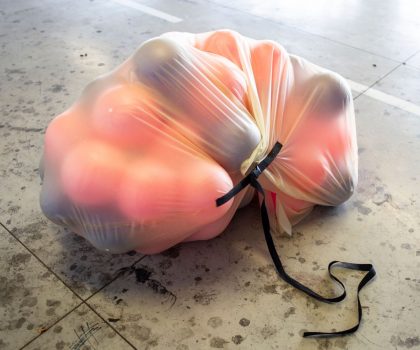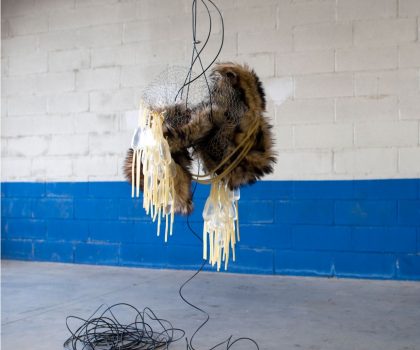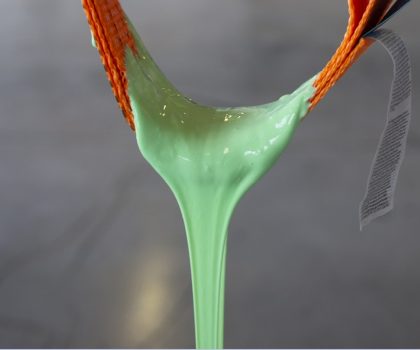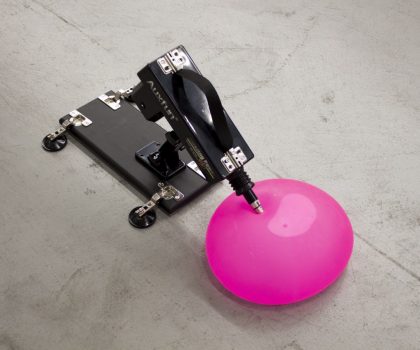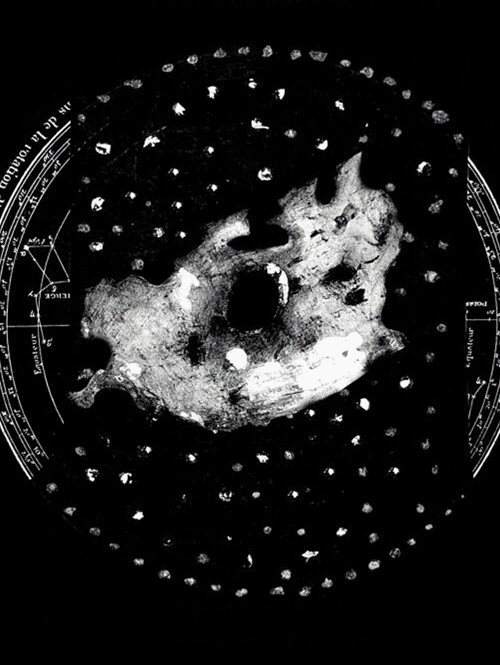Ilaria Benvenuti’s practice moves across sculpture, painting, and installation to explore the porous boundaries between bodies and machines, emotions and systems, instincts and codes. Her work inhabits a territory where sensation overrides language, and where both organic and inanimate forms acquire a tense, almost erotic vitality.
At the core of Benvenuti’s research is a notion of inorganic protosexuality—a pre-anthropocentric, pre-narrative impulse that animates materials beyond the human. Her sculptures often stage encounters between technological devices and synthetic matter, evoking a sexuality that is machinic, alien, and affectively charged. These are not speculative futures, but urgent, physical fictions that speak to a present in which intimacy is entangled with automation, and desire leaks into circuitry.
The body in Benvenuti’s universe is never stable. In her paintings, it splinters into fractured gestures, raw chromatic violence, and painterly excess. Her large-scale canvases resist figuration but remain deeply corporeal—vessels for a gestural compulsion that refuses containment. The surface becomes an unstable skin, recording the collapse of form into emotion, impulse, and material mutation.
Benvenuti’s installations extend this logic of fracture and immersion. They are not environments to be observed, but thresholds to be entered—where viewers become part-object, part-sensor, drawn into the work’s own sensing logic. Here, human perception becomes just one node in a wider, post-human system of response.
Her approach is cyclical, driven by states of collapse and reconstitution. Rather than illustrating concepts, her works perform them—through materials that melt, vibrate, rupture, or ooze. Across formats and contexts, Benvenuti dissolves hierarchies between subject and object, exhibition and experiment, technology and flesh.
By staging affective instability and machinic intensities, Ilaria Benvenuti opens up new imaginaries of embodiment—where vulnerability, violence, eroticism, and resistance fuse in unpredictable, sensorily charged configurations.
At the core of Benvenuti’s research is a notion of inorganic protosexuality—a pre-anthropocentric, pre-narrative impulse that animates materials beyond the human. Her sculptures often stage encounters between technological devices and synthetic matter, evoking a sexuality that is machinic, alien, and affectively charged. These are not speculative futures, but urgent, physical fictions that speak to a present in which intimacy is entangled with automation, and desire leaks into circuitry.
The body in Benvenuti’s universe is never stable. In her paintings, it splinters into fractured gestures, raw chromatic violence, and painterly excess. Her large-scale canvases resist figuration but remain deeply corporeal—vessels for a gestural compulsion that refuses containment. The surface becomes an unstable skin, recording the collapse of form into emotion, impulse, and material mutation.
Benvenuti’s installations extend this logic of fracture and immersion. They are not environments to be observed, but thresholds to be entered—where viewers become part-object, part-sensor, drawn into the work’s own sensing logic. Here, human perception becomes just one node in a wider, post-human system of response.
Her approach is cyclical, driven by states of collapse and reconstitution. Rather than illustrating concepts, her works perform them—through materials that melt, vibrate, rupture, or ooze. Across formats and contexts, Benvenuti dissolves hierarchies between subject and object, exhibition and experiment, technology and flesh.
By staging affective instability and machinic intensities, Ilaria Benvenuti opens up new imaginaries of embodiment—where vulnerability, violence, eroticism, and resistance fuse in unpredictable, sensorily charged configurations.



